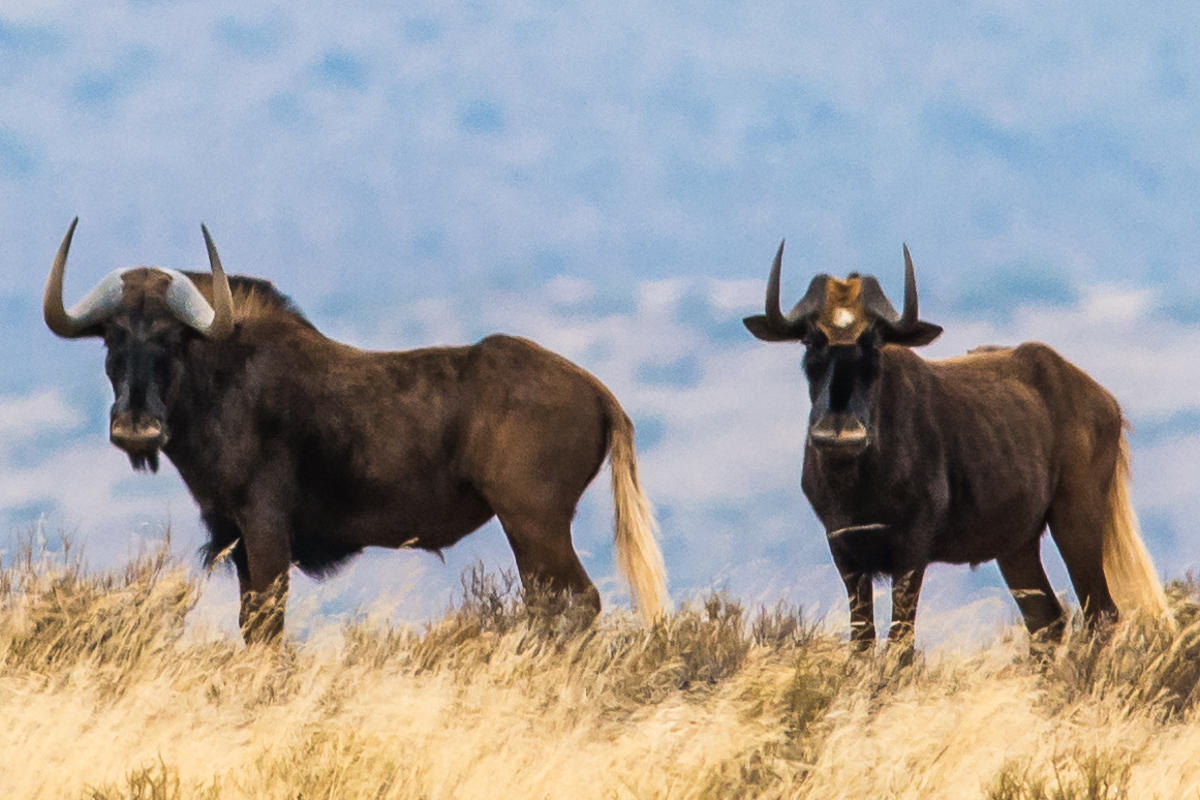A confusion of wildebeest
Never has a collective noun been more apt; a herd of running wildebeest is indeed a confusing mass of legs, horns and tails.
Wildebeest (or gnu as they used to be called) can be black or blue. Black wildebeest (white tailed gnu) are far less common, with a global population of around 20 thousand, compared to well over 1.5 million blue wildebeest (brindle gnu).
Black wildebeest are brown with very dark manes, and cream coloured tails. In contrast a blue wildebeest, like this one in the Okavango Delta, is larger, grey blue and has a dark tail.
Black wildebeest were almost driven to extinction a hundred years ago, as they were considered a pest, and their hides and meat were useful. Karoo Ridge Conservancy began breeding black wildebeest several years ago and now has a healthy population of nearly one hundred. Here you can see the three distinct social groups of female herds with calves, bachelor herds and lone territorial bulls.
A black wildebeest is small, about the size of a Shetland pony. Their small size and heavy build make them vulnerable to predators so, if necessary, the wildebeest can run extremely fast, up to 80km/h. However a more useful strategy is for the herd to stand on the skyline swirling and jumping about, thereby creating a large mass of animals, looking bigger than they really are and intimidating any potential predator.
Photographing a single male bull is relatively straightforward, as he will stand and watch you approach, before moving away to a safe distance before stopping to look at you again. With a reasonable lens you can get quite a good image, as here, with the setting Karoo sun glinting on this bull’s spectacular curved horns.
Photographing a herd is more challenging, partly because it only takes one skittish animal to set the whole herd charging off. With forty or so animals rushing about, the likelihood of getting all the animals in focus, against a good background and with all heads and legs in a photogenic position, is zero. The only option is to try to pick off part of the herd. Set the camera for a continuous fast shutter burst, use a high shutter speed with all the image stabilisation you can utilise (both on the camera and by bracing your body against the camera and the vehicle), and then hope for the best!








